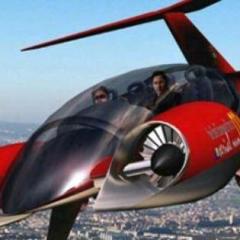Bore, Stroke, Displacement
-
Latest Postings
-
0
2006 Aurion 222000kms
Bought this in 2008 and has a full service history since then. Blue, touring mag wheels, cloth seats, new tyres (yokohama) recently, brakes replaced, aircon compressor replaced (12 months back) It has a couple of small dents (bonnet and boot spoiler) but the car runs very well. Located Wodonga until Sunday then in Croydon Vic from December. Registered, no RWC. $3500 -
0
2017 Diesel d4d toyata hiace limp mode
Hi i have a 2017 d4d toyota hiace purchased from new I am currently experiencing issues with my van It seems to be blowing dark black smoke apon acceleration and is very laggy under foot also No fault code on the dash but i have a a fault code of p1608 Lack of power code come up on my mechanics scanner Both my mechanic and toyota have no idea what the issue is -
1
Tyre Sale Specials
Tried to search prices on mycar website & nothing would load Tyroola also has 15% off site wide. Some good prices depending what your looking for https://www.tyroola.com.au/- tyres
- tyre specials
-
(and 1 more)
Tagged with:
-
0
overheated engine
I drive a 2010 series 200 sahara V8 automatic. I recently towed a small caravan on a not that hotter day. The temperature gauge went to about half then dropped back to normal. The motor then went into limp mode and eventually stopped. On lifting the bonnet i noticed the top radiator tank had split all the way across. I have only two months ago had the complete cooling system checked with no defects. I called the RAA in South Aust and they tried to start it but just turned over but did not fire up. It was still pretty hot. I have been told the motor would be ruined by overheating. The car has been sitting at the repairers for 5 days now and as far as i know it has not been attempted to start. Before putting a new motor in it would it be worth putting a new radiator in it and see if it will fire up? Open to any suggestions at this stage. -
1
1996 Trueno XZ - Is it worth modding?
Depends on how common/rare they are in your part of the world. The XZ trim was the second-lowest so didn't come with most of the fun bits that the full-fruit BZG/V/R models did, so it's not anywhere near as desirable stock but sometimes you have to make do with what you can find, plus you shouldn't feel as guilty modding the heck out of it since most of it isn't special. -
62
VSC, Traction Control, Check Engine lights all on
I attended Toyota Preston for Aurion ATX 2013 major service today. Cost $~$1300. On the way home I stopped to pick up dinner. Two fault lights: engine and VSC lights came on when I restarted the car. Car drove home just fine. I can only return the car tomorrow for them to sort out. Annoyed. Let’s see if they’re still on in the morning. -
1
1996 Trueno XZ - Is it worth modding?
Hi everyone, new member to the group and owner driver of a nifty little Toyota Sprinter Trueno XZ, now this was my cousins car, I bought it off him and after various drives, I have come to the decision that this needs alot of love. Now I am wondering if its worth putting my time and money into doing this certain make n model up or should I just buy a different car to do up? I am not very car-inclined so I really don't know a lot. Any opinions would be very helpful Thankful! -
1
Query about the correct rotors for 2006 ACV40 Camry.
I did a Google search. RDA 8112 suits your vehicle: TOYOTA CAMRY ACV40R 2.4L 2AZ-FE DOHC 16v MPFI 4cyl 117kW 5sp Auto 4dr Sedan FWD [06/06 – 09/11] TOYOTA CAMRY ACV40R 2.4L 2AZ-FE DOHC 16v MPFI 4cyl 117kW 5sp Man 4dr Sedan FWD [06/06 – 09/11] RDA 8112 Specifications: Specifications: Centre Hole Diameter: 62mm Flange Diameter: 62mm Minimum Thickness: 25mm Type: Vented Height: 49.2mm Diameter: 296mm Item Type: Disc Brake Rotor Material Type: Cast Iron Thickness: 28mm Pack Qty: Pair Stud Holes: 5 Position: Front RDA7686 RDA Brake Rotor 296mm x 26 Min (151mm Outer Hat Dia) Type DISC BRAKE ROTOR Brand RDA BRAKES Unit of Measure EACH Description RDA Brake Rotor 296mm x 26 Min (151mm Outer Hat Dia) Warranty 12 Months 20000kms Centre Hole Diameter 62mm Minimum Thickness 26mm Type Vented Note 151mm Outer Hat Diameter | (Use RDA8112 for 155mm) Height 50mm Diameter 296mm Item Type Disc Brake Rotor Thickness 28mm Number of Stud Holes 5 Position Front Brake Disc Type Vented Brake Disc Thickness 28 Centering Diameter 62 -
1
Tyre Sale Specials
I have been waiting and hoping for this Black Friday sale special to appear for 2024. 50% off all Pirelli Tyres. Main qualifying sale condition is: "Offer Tyres must be booked on Friday 29 November 2024 and be fitted between Monday 6 January 2025 and Saturday 15 February 2025." https://www.mycar.com.au/blackfriday?gad_source=1&gclid=Cj0KCQiAuou6BhDhARIsAIfgrn6ZbAnmv-FBFyT5UjZ5s9kCnKFSoMQLrVk3KXff7IqWPqq56qzU7oMaAr-eEALw_wcB&gclsrc=aw.ds- tyres
- tyre specials
-
(and 1 more)
Tagged with:
-
10
Android auto
OK. Does any of Toyota's advertising material mention Android Auto? If so then kick up a stink, with Toyota management, about misrepresentation and false advertising, reminding them of the hefty fines. Herb
-






Recommended Posts
Create an account or sign in to comment
You need to be a member in order to leave a comment
Create an account
Sign up for a new account in our community. It's easy!
Register a new accountSign in
Already have an account? Sign in here.
Sign In Now